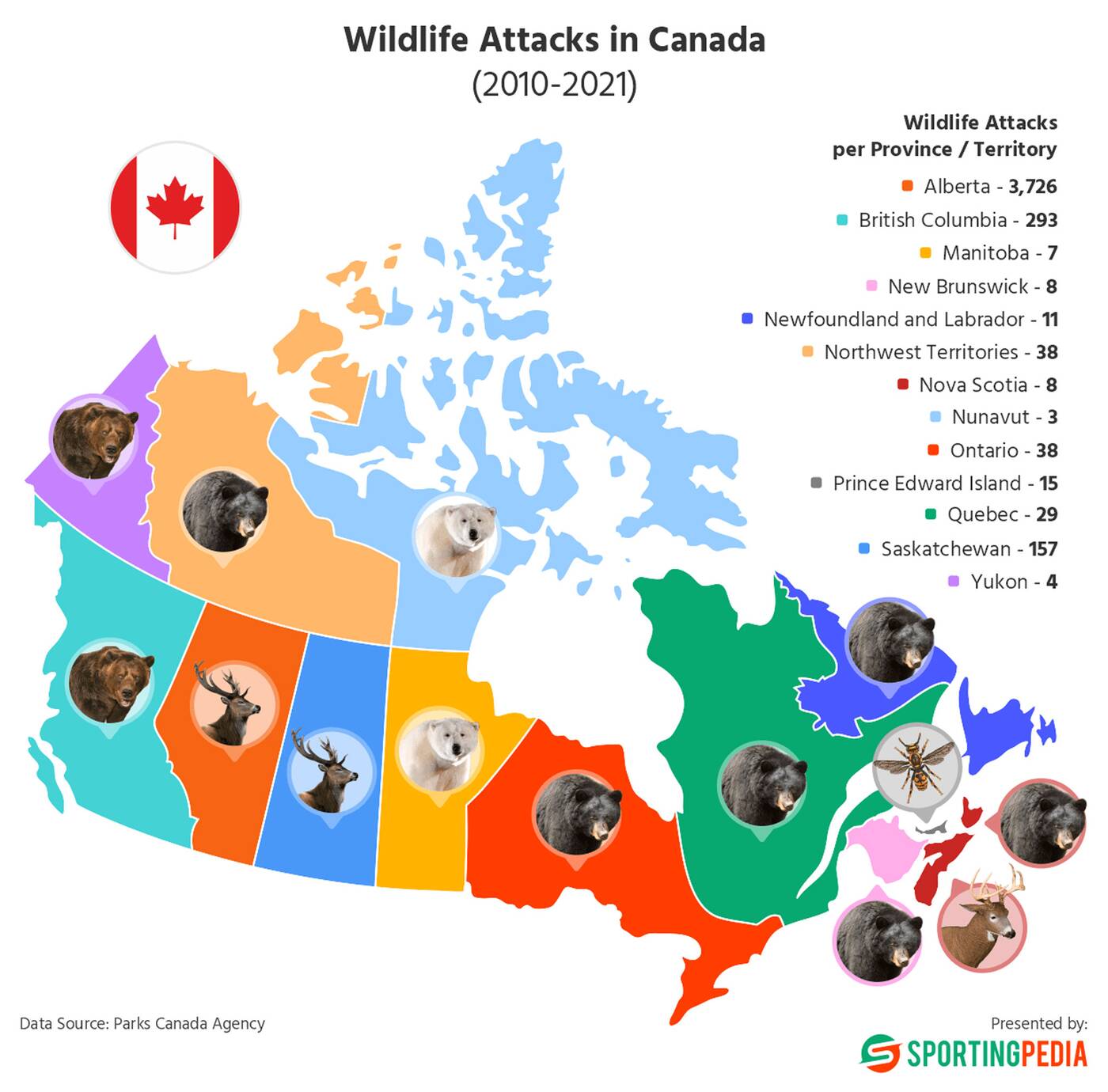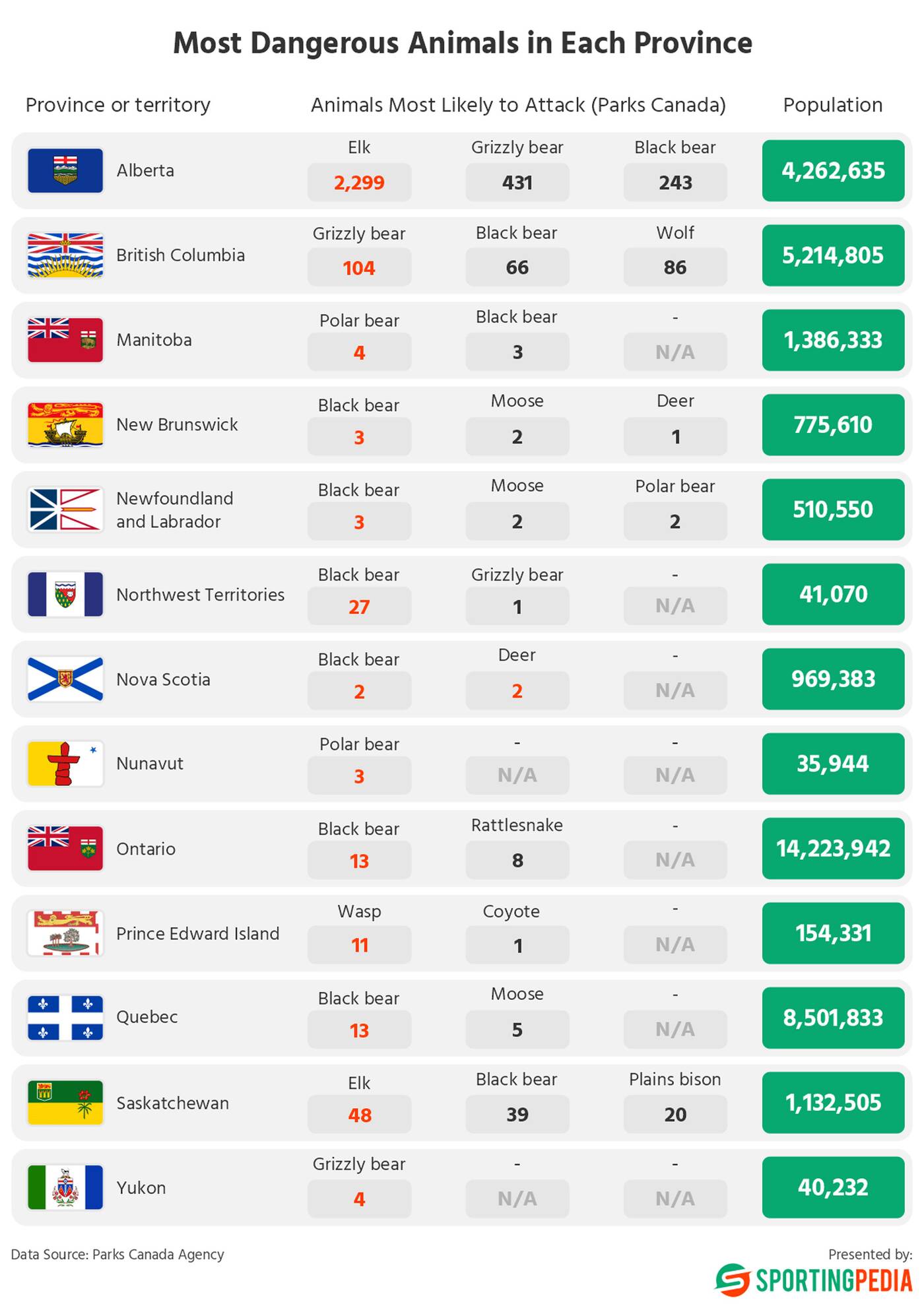
These are the wild animals most likely to attack you in Ontario
Ontario accounts for over one million square kilometres of Canada's almost 10 million square-kilometre landmass, home to thousands of species of animals that may or may not want to cause you grievous injury.
And some are more dangerous than others, according to a deep dive by the team at SportingPedia, looking into the likelihood of animal attacks and the species most responsible across each of the 13 Canadian provinces and territories.

Surprising literally nobody, Alberta proved the most likely region of Canada to be mauled by wildlife, with 2,736 attacks during the period from 2010 to 2021, for a rate of 1 in 1,144 people attacked.
What was surprising was the top offender for attacking humans, with an astonishing 2,299 attacks by elk, far surpassing attacks by grizzly bears (431) and black bears (243) combined.

Ontario landed much further down the list, ranking ninth of the 13 provinces and territories with just 38 wildlife attacks on people from 2010 to 2021, for a rate of 1 in 374,318.
It's pretty easy to guess what Ontario's most dangerous wild animal is in terms of direct confrontations with humans, and black bears did indeed account for 13 of the 38 attacks during that period.
The next most dangerous animal — based solely on the eight attacks logged during that eleven-year span — is the infamous massasauga rattlesnake (Sistrurus catenatus,) the only venomous snake occurring naturally in Ontario.
A species of pit viper, massasauga rattlesnakes want absolutely nothing to do with humans, but if threatened, they can deliver a potent and potentially fatal bite.
If bitten by this reclusive but dangerous creature, you should assume that you've been dosed with cytotoxic, tissue-destroying venom.
But experts say that, unlike in the movies, you should not try to suck out the venom or use a tourniquet. Instead, victims should lie down, wash the site of the bite, and immediately call 911.
Considering the species' shy nature, encounters are almost always accidental. The safest approach is avoidance, like avoiding trampling through brush off of hiking trails, and wearing boots that lessen the chance of the snake delivering a venom-packed bite.
Other interesting entries from across Canada include wasps being the most likely culprit in attacks on people living in Prince Edward Island, and plains bison representing the third-most dangerous animal in Saskatchewan, with 20 attacks. One person in New Brunswick was even attacked by a deer.
Latest Videos
Latest Videos
Join the conversation Load comments







